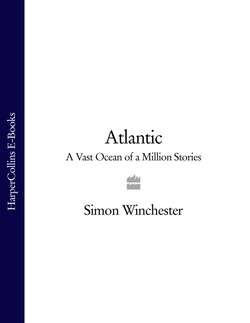Читать книгу Atlantic: A Vast Ocean of a Million Stories - Simon Winchester - Страница 10
1. ALLUREMENTS
ОглавлениеThe Kingdom of Morocco has on its most widely used currency banknote neither a camel nor a minaret nor a Touareg in desert blue, but the representation of the shell of a very large snail. The shell of this shore-living marine beast — a carnivore that uses its tongue to rasp holes in other creatures’ shells and sip out the goodness - is reddish brown, slender, and spiny, with a long spire and an earlike opening. It is in all ways rather beautiful, the kind of shell not to be idly thrown away by anyone lucky enough to find one.
Yet it was not the shell’s curvilinear elegance that many years ago persuaded directors of Morocco’s Central Bank in Rabat to place its image on the back of its 200 - dirham note. The reason for their choice, more befitting a currency note, had all to do With money and profit. For it was this curious sea creature that formed the basis Morocco’s Fortunes, long before Morocco was an organized nation.
The Berbers of the desert were not mariners, nor were they especially interested in harvesting these snails and putting them to good use. It fell instead to sailors from far away, who came thousands of miles from the Levantine coast of the eastern Mediterranean, to realise the potential for using these gastropods to make a fortune. The great challenge would come in the business of acquiring them.
For the sea in which these elegantly fashioned beasts lived so abundantly was a body of water very different in character from the placid waters of the Mediterranean. The gastropods were generally to be found, thanks to complex reasons of biology and evolutionary magic, clinging stubbornly to the rocks and reefs in the great and terrifying unknown of the Atlantic Ocean, well outside the known maritime world, and in a place where traditional navigational skills, honed in the Mediterranean, were unlikely to be of much value. To harvest these creatures, any mariners of sufficient boldness and foolhardiness would be obliged to grit their collective teeth and venture out into the deep waters of the greatest body of water it was then possible to imagine.
But they did so, in the seventh century BC. They did so by blithely setting sail past the Pillars of Hercules, the exit gates of their own comfortable sea, and out into the great grey immensity of the limitless unknown beyond. The sailors who performed this remarkable feat, and yet did it so casually, were Phoenicians; they used sailing ships that were built initially only to withstand the waves of their familiar inland short sea but now had to tackle the much more daunting water of an unknown long sea beyond. There must have been something remarkable about the sailors, yes; but there must also have been something even more so about these particular North African snails that made them worth so much risk.
And indeed there was. First, however, it seems appropriate to set the snails to one side and consider the lengthy and necessarily complex human journey that brought the Phoenicians to Morocco in the first place.
